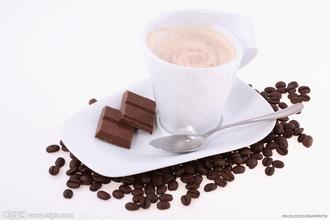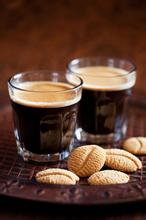An introduction to the Origin and Cultural course of Coffee beans in Kenya
1) Common categories:
Hand-picked coffee fruit, picked by hand, picked out immature fruit (unripe), overripe fruit (overripe) and other defects, peeled, after about 36 hours of fermentation, placed on a metal grid for sun drying, in the processing plant to remove the seed shell (parchment), become a blue-green appearance of attractive Kenyan raw beans.
These beautiful raw beans are graded according to particle size (size), shape (shape) and weight (weight):
E:kenya E, elephant beans, above elephant bean,18 (including round beans)
Round beans containing large grains, like PB, are small in quantity.
AA:Kenya AA,17-18 mesh
AB:Kenya AB,15-16, which is a mixture of An and B.
Grade An above 17 mesh (6.8mm), grade B above 16 mesh (6.3mm)
Light beans selected by TT:AA and AB by airflow separator
Over PB:Kenya PB,15, round beans and peaberry account for about 10% of Kenyan coffee.
CRV 12-14 mesh and PB light bean screened by air flow separator
Under 12 eyes, there are more defective beans, chopped beans and light beans.
HE: beyond the above level becomes HE (Hulled Ears)
Kenya Coffee Grade: Kenya AA
2) the raw beans without official standard grading are UG (ungrade).
E,AA,AB,PB → UG1
C,TT,T,HE → UG2
3) MBUNI (sun beans, non-washing treatment)
All raw beans are sorted by gravity (gravity separator)
MH:heavy mbuni, heavy beans, yellow, free of black beans, fragments, dried fruit or other defects
The cup test shows a typical sun flavor with no taste defects.
ML:light mbuni yellowish green, with a small amount of worm-eaten beans or black beans, no stinky beans or fragments
There is no earthy or other bad taste in the cup test.

Important Notice :
前街咖啡 FrontStreet Coffee has moved to new addredd:
FrontStreet Coffee Address: 315,Donghua East Road,GuangZhou
Tel:020 38364473
- Prev

Introduction of various kinds of coffee beans, producing areas, taste, etc.
Colombian coffee is produced in Colombia, roasted coffee beans, will release a sweet flavor, with sweet in the acid, bitterness in the good quality characteristics, because of the appropriate concentration, is often used in high-grade mixed coffee. Santos Coffee is mainly produced in Sao Paulo, Brazil. This kind of coffee is neutral in acid, sweet and bitter, with moderate concentration and moderate sour taste.
- Next

Coffee tree culture, origin legends, main ingredients
The main ingredient editors the fiber of fiber raw beans will be carbonized after baking and combine with caramel to form the hue of coffee. The main source of protein calories, the proportion is not high. Most of the protein in coffee powder will not dissolve out when brewing coffee, so the intake is limited. Sugar coffee raw beans contain about 8% sugar, most of which are converted into caramel after baking.
Related
- Does Rose Summer choose Blue, Green or Red? Detailed explanation of Rose Summer Coffee plots and Classification in Panamanian Jade Manor
- What is the difference between the origin, producing area, processing plant, cooperative and manor of coffee beans?
- How fine does the espresso powder fit? how to grind the espresso?
- Sca coffee roasting degree color card coffee roasting degree 8 roasting color values what do you mean?
- The practice of lattes: how to make lattes at home
- Introduction to Indonesian Fine Coffee beans-- Java Coffee producing area of Indonesian Arabica Coffee
- How much will the flavor of light and medium roasted rose summer be expressed? What baking level is rose summer suitable for?
- Introduction to the characteristics of washing, sun-drying or wet-planing coffee commonly used in Mantenin, Indonesia
- Price characteristics of Arabica Coffee Bean Starbucks introduction to Manning Coffee Bean Taste producing area Variety Manor
- What is the authentic Yega flavor? What are the flavor characteristics of the really excellent Yejasuffi coffee beans?

